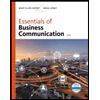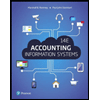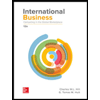
(a)
Case summary: R and N were partners in LLC. They both disagreed with their company’s management and could not resolve the disagreement. Partner N decided to dissolve the company, but partner R wanted to continue with the company and dissociate N. N filed a suit for the dissolution of LLC and she counterclaimed for N’s dissociation. The decision was passed in favor of N. Aggrieved by the decision, R appealed in the appellate court.
To find:The party’s choice on which issue was framed on the appeal of the R’s case.
(b)
Case summary: R and N were partners in LLC. They both disagreed with their company’s management and could not resolve the disagreement. Partner N decided to dissolve the company, but partner R wanted to continue with the company and dissociate N. N filed a suit for the dissolution of LLC and she counterclaimed for N’s dissociation. The decision was passed in favor of N. Aggrieved by the decision, person R appealed in the appellate court.
To find:The rules of interpretation used by the appellate court.
(c)
Case summary: R and N were the partners in LLC. They both disagreed with their company’s management and could not resolve the disagreement. Partner N decided to dissolve the company, but partner R wanted to continue with the company and dissociate the partner N. N filed a suit for the dissolution of LLC and she counterclaimed for N’s dissociation. The decision was passed in favor of N. Aggrieved by the decision, person R appealed in the appellate court.
To find: The languages of statutes construed by the court.
(d)
Case summary:R and N were the partners in LLC. They both disagreed with their company’s management and could not resolve the disagreement. Partner N decided to dissolve the company, but partner R wanted to continue with the company and dissociate N. N filed a suit for the dissolution of LLC and she counterclaimed for N’s dissociation. The decision was passed in favor of N. Aggrieved by the decision, person R appealed in the appellate court.
To find:The language construction by the court that led to the result.
Want to see the full answer?
Check out a sample textbook solution
- From a cultural perspective, based on research that you have conducted. Select three of the listed topics you consider relevant to explore in your discussion that will help a company better understand what it is like to live as a citizen in the country you have chosen: geography, social institutions (e.g., family, education, politics, legal system, and social welfare), religion, living conditions, and language.arrow_forwardBrun Company produces its product through two processing departments: Mixing and Baking. Information for the Mixing department follows. Direct Materials Conversion Unit Percent Complete Percent Complete Beginning work in process inventory 7.500 Units started this period 104,500 Units completed and transferred out 100.000 Ending work in process inventory 12.000 100% 25% Beginning work in process inventory Direct materials Conversion $6.800 14.500 $21.300 Costs added this period Drect materials 116,400 Conversion Total costs to account for 1.067,000 1.183.400 $1.204.700 Required 1. Prepare the Mixing department's production cost report for November using the weighted average method Check (1) C$1.000 2. Prepare the November 30 journal entry to transfer the cost of completed units from Mixing to Bakingarrow_forwardNonearrow_forward
 BUSN 11 Introduction to Business Student EditionBusinessISBN:9781337407137Author:KellyPublisher:Cengage Learning
BUSN 11 Introduction to Business Student EditionBusinessISBN:9781337407137Author:KellyPublisher:Cengage Learning Essentials of Business Communication (MindTap Cou...BusinessISBN:9781337386494Author:Mary Ellen Guffey, Dana LoewyPublisher:Cengage Learning
Essentials of Business Communication (MindTap Cou...BusinessISBN:9781337386494Author:Mary Ellen Guffey, Dana LoewyPublisher:Cengage Learning Accounting Information Systems (14th Edition)BusinessISBN:9780134474021Author:Marshall B. Romney, Paul J. SteinbartPublisher:PEARSON
Accounting Information Systems (14th Edition)BusinessISBN:9780134474021Author:Marshall B. Romney, Paul J. SteinbartPublisher:PEARSON
 International Business: Competing in the Global M...BusinessISBN:9781259929441Author:Charles W. L. Hill Dr, G. Tomas M. HultPublisher:McGraw-Hill Education
International Business: Competing in the Global M...BusinessISBN:9781259929441Author:Charles W. L. Hill Dr, G. Tomas M. HultPublisher:McGraw-Hill Education





